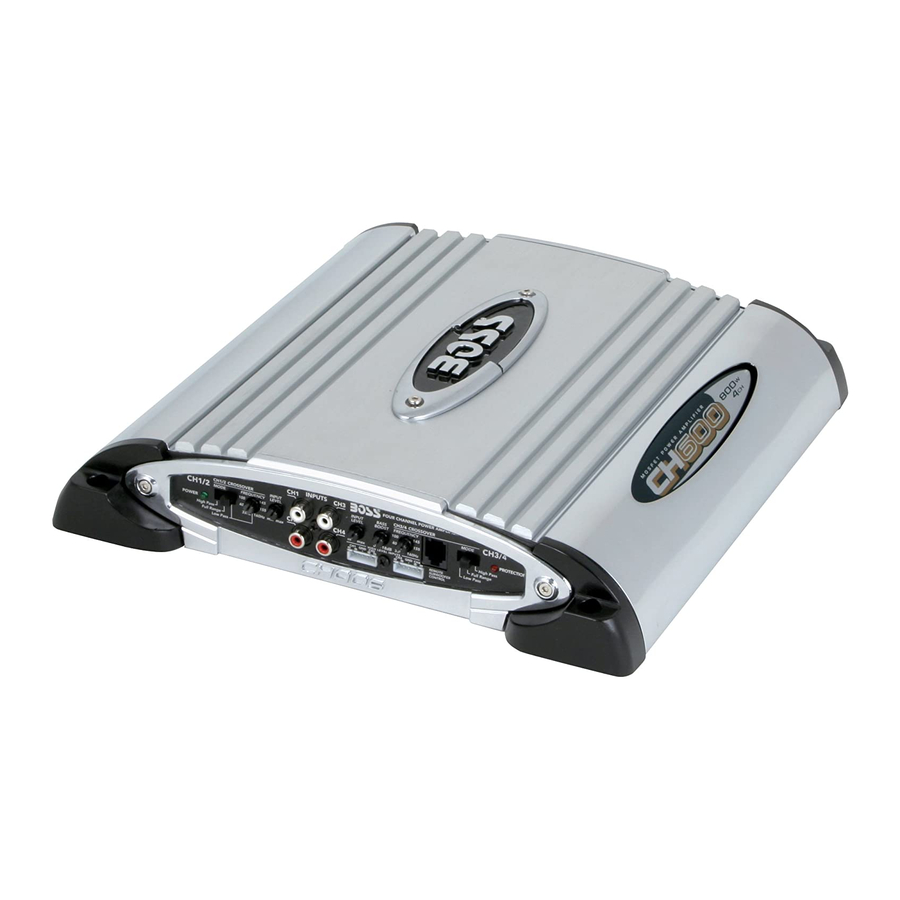Bose Lifestyle SA-3 Теорія операції - Сторінка 3
Переглянути онлайн або завантажити pdf Теорія операції для Підсилювач Bose Lifestyle SA-3. Bose Lifestyle SA-3 4 сторінки. Bose stereo amplifier owner's guide sa-2, sa-3
Також для Bose Lifestyle SA-3: Посібник користувача (32 сторінок), Посібник (34 сторінок)

SA-2 and SA-3 Theory of Operation
Volume Control:
Local volume control connection jacks (J6). Allows you to control the volume in a room using a wall-mounted
control. Currently the volume control adjustment is not available to end consumers. Contact your Bose® dealer
or call Bose Customer Service for information on installing this feature. See the contact list inside the back
cover of the Owners Guide. The output of U1 is AC coupled to the volume control chip U3. This is an analog
resistor "ladder" type volume control, incremented in steps of 1 dB. This IC is controlled by I2C bus, Data and
Clock lines (pins 6 and 7) from the microcontroller (U4). At volume levels below –20 dB (the volume control has
a range between –90 and 0 dB of gain); dynamic EQ action (bass boost) occurs from the op-amp circuit
connected to pins 12 and 19. This circuit simulates a parallel resonant RLC circuit at about 50 Hz that provides
progressively greater relative boost to frequencies below 200 Hz, as the volume level decreases.
Compressor:
The output of the volume control is AC coupled through C104 and C204 to amplifier/compressor stage U6
(pins 1,2,3 and 8,9,10). This is a differential inverting amplifier with gain of 6.3 (16 dB). At normal and low
volume level, current-controlled amplifier U5 is turned OFF. At high (clipping) volume level transistor Q4 turns
ON and supplies current to U5, which reduces the gain of the circuit.
Specifically, if either the left or right speaker output reaches a positive voltage amplitude within 3 volts of the
positive power supply rail, then comparator output U6 pin 14 switches low and charges capacitors C18 and
C19 to a negative voltage level. This voltage is converted to a current at the collector of Q4, which then
increases the gain of U5, and decreases the overall gain at the output of U6 pins 1 (left) and 8 (right). C18 is a
"hold" capacitor. Once charged, its voltage stays constant for at least 20 ms, until C19 discharges (becomes
more positive) enough to turn on diode D12. C19 starts discharging immediately, through R38, when the
speaker output voltage is less than the clipping level.
Power Amplifier:
The LSA-2 uses the TDA7294 (100V) power amplifier. It is a class AB linear amplifier IC. The amplifier is
muted when pins 9 and 10 are at logic low. It is unmuted when they are at logic high (greater than 3.5 VDC).
The mute state is controlled by the microcontroller U4 pin 11. LSA-2 does not use the class-G switching
transistors (Q154, Q155, Q254, Q255) and associated drive circuitry. Instead, they are jumpered out by
jumpers JP1, JP2, JP3, JP4). It also does not use power diodes D152, D153, D252, D253.
LSA-3 uses the higher voltage TDA7293HS (120V) power amplifier in a class-G configuration with switching
transistors and diodes mentioned above. At low volume, the amplifier runs off the lower set of voltage rails,
supplied through D152 and D153 (left channel). At a specific threshold, depending on the amplitude of the
audio signal, diode D150 conducts and turns on a string of transistors (Q151, Q153, Q154 on the positive half
cycle, Q150, Q152, Q155 on the negative half cycle) that increases the supply voltage at IC pins 13 and 15.
When the voltage at these pins increase, diodes D152 and D153 become reverse biased and the low voltage
supply is shut off and the amplifier draws current only from the higher voltage supply. Overall this operation
results in higher efficiency, because most of the time the amplifier IC is operating from the low voltage supply
rails.
Thermal Protection:
There are two forms of thermal protection employed. One relates to the temperature of the bridge rectifier(s),
the other to the temperature of the enclosure.
11/22/2005
Page 3 of 4
27172X-00
